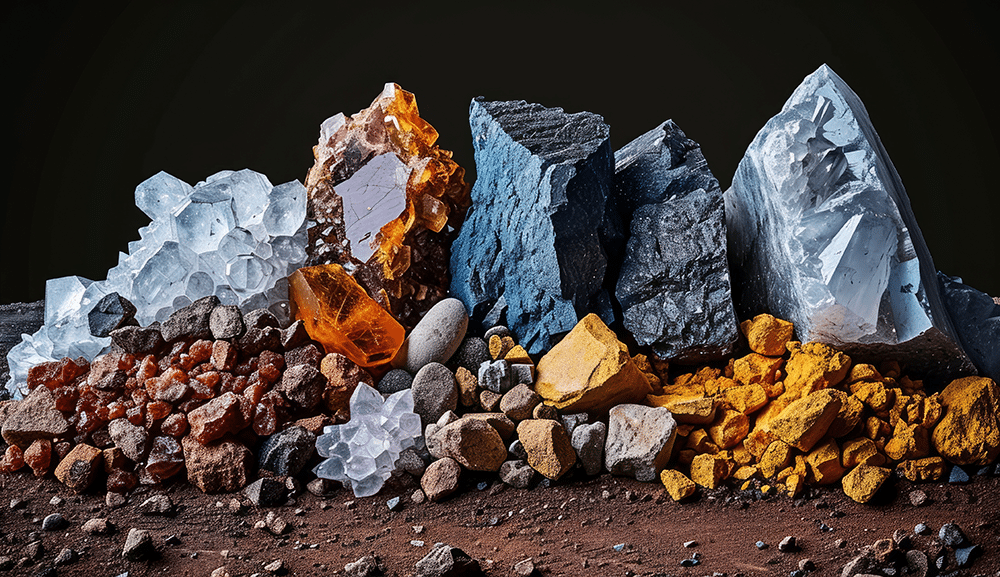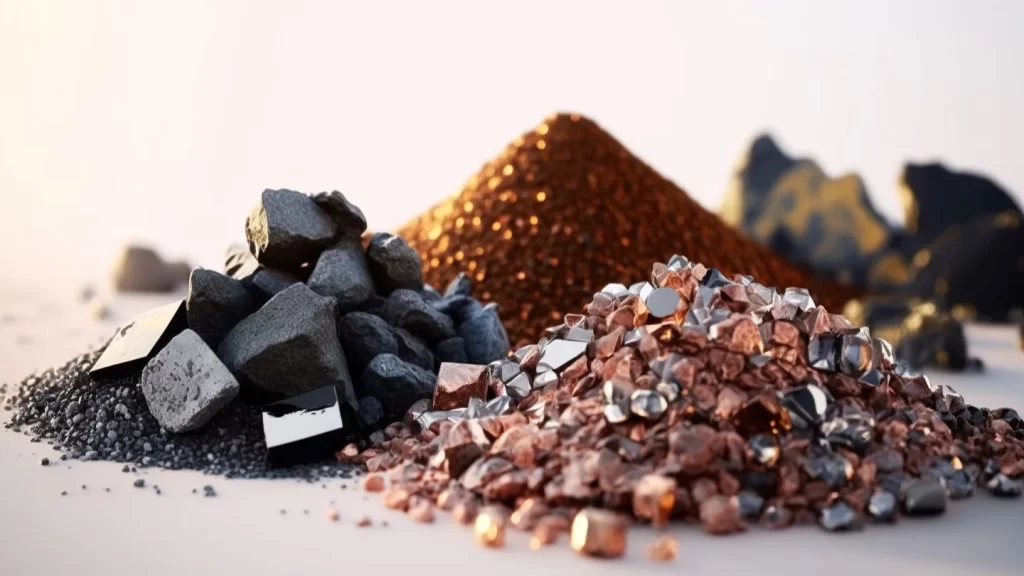Investing in Rare Earth Metals: Opportunities & Risks Unveiled

Investing in rare earth metals presents both exciting opportunities and significant risks. These materials are crucial for technology and renewable energy, driving demand. However, market volatility and geopolitical tensions can impact prices unexpectedly. Investors must weigh the potential for high returns against the chance of losses. Understanding the landscape is vital for making informed decisions. This post will explore the benefits of investing in rare earth metals while also highlighting the pitfalls to avoid. Equip yourself with knowledge to navigate this complex market effectively.
Key Takeaways
- Investing in rare earth metals can be lucrative, especially given their critical role in technology and renewable energy sectors.
- Stay informed about market trends, as demand for these metals is driven by advancements in electronics, clean energy, and electric vehicles.
- Diversify your investments to mitigate risks associated with price volatility and geopolitical factors affecting rare earth metal supply.
- Conduct thorough research on the companies you invest in, focusing on their sustainability practices and production capabilities.
- Be aware of the environmental and ethical implications of mining rare earth metals, which can impact your investment choices.
- Monitor future developments in recycling technologies, as they may influence supply and demand dynamics in the rare earth metals market.
Understanding Rare Earth Metals
Definition
Rare earth metals are a group of 17 elements. They include lanthanides and scandium and yttrium. These metals have unique properties. They are excellent conductors of electricity and heat. Their magnetic properties are also valuable in various applications.
Significance
Modern technology relies heavily on rare earth metals. They are essential in making smartphones, electric vehicles, and renewable energy systems. For example, neodymium is used in powerful magnets for wind turbines. Dysprosium enhances the performance of electric vehicle motors. Their role in tech development makes them crucial for future innovations.
Sources and Distribution
China is the largest producer of rare earth metals, supplying over 60% of the global demand as of 2023. Other significant sources include Australia, the United States, and Russia. Rare earth deposits are often found in specific locations, such as mountain ranges and riverbeds.
Mining these metals can be challenging due to environmental concerns. The extraction process can lead to pollution and habitat destruction. As demand grows, countries seek to diversify their sources to reduce reliance on China.
Investors should consider these factors when exploring opportunities in rare earth metals. The balance between opportunities and risks is crucial in this market.
Key Applications in Modern Technology
Electronics
Rare earth metals play a crucial role in electronics. They are essential for the production of smartphones and computers. Neodymium is used in powerful magnets found in speakers and headphones. Dysprosium enhances the performance of hard drives, making data storage efficient.
These metals enable smaller, more efficient devices. Their unique properties allow manufacturers to create compact components. This leads to lightweight and portable electronics that many rely on daily.
Renewable Energy
Renewable energy technologies heavily depend on rare earth metals. Wind turbines utilize neodymium for strong permanent magnets. These magnets improve efficiency and reduce costs in energy generation. Solar panels also use indium, which helps convert sunlight into electricity effectively.
The demand for clean energy sources has increased. This trend boosts the need for rare earth metals in these technologies. As countries shift towards sustainability, the importance of these materials grows.
Defense and Aerospace
Defense and aerospace industries require rare earth metals for various applications. They are vital in military equipment, such as missiles and radar systems. Lanthanum is used in night vision devices, enhancing visibility in low-light conditions.
Aircraft engines also benefit from these materials. They improve performance and durability under extreme conditions. The strategic value of rare earth metals makes them critical for national security.
Investment Opportunities and Market Trends
Key Companies
Several key companies dominate the rare earth metals sector. China Northern Rare Earth Group is a major player, controlling a significant portion of global supply. Lynas Corporation, based in Australia, is another important company. It focuses on mining and processing rare earths outside of China. Their efforts contribute to diversifying the supply chain.
Electric Vehicle Demand
The electric vehicle (EV) market drives demand for rare earth metals. These metals are essential for making powerful magnets used in EV motors. As of 2023, global EV sales reached over 10 million units, indicating strong growth. This trend suggests that demand for rare earths will continue to rise as more consumers choose electric vehicles.
ETFs and Investment
Exchange-Traded Funds (ETFs) provide an accessible way to invest in rare earth metals. They allow investors to buy shares in a diverse range of companies involved in this sector. Funds like the VanEck Vectors Rare Earth/Strategic Metals ETF offer exposure to various firms, reducing risk. Investors can benefit from the potential growth of the rare earth market without needing to pick individual stocks.

Risks and Challenges in Investing
Price Volatility
Investing in rare earth metals comes with significant price volatility. Prices can fluctuate widely due to market demand and supply conditions. For instance, between 2010 and 2011, prices surged dramatically, then dropped sharply. Such swings can lead to substantial financial losses for investors.
Regulatory Changes
Regulatory changes also pose risks in the rare earth metals market. Governments may introduce new laws that affect mining operations or export regulations. For example, China’s export quotas have previously impacted global supply. Investors must stay informed about potential changes that could alter the market landscape.
Geopolitical Tensions
Geopolitical tensions further complicate investments in rare earth metals. Countries like China dominate production, accounting for over 60% of the global supply. Political disputes can disrupt this supply chain. For instance, trade conflicts between the U.S. and China have raised concerns about access to these essential materials. Investors should be aware that such tensions can lead to sudden shortages or price hikes.
In summary, while opportunities exist in rare earth metals, investors face price volatility, regulatory uncertainties, and geopolitical risks that can impact their investments significantly. Understanding these challenges is crucial for making informed decisions.
The Future of Rare Earth Metals
Demand Growth
Advancements in technology drive the demand for rare earth metals. Electric vehicles (EVs) and renewable energy sources require these materials. For instance, wind turbines and solar panels rely on rare earth elements for efficiency. As countries shift towards green energy, the need for these metals will likely grow.
Diversifying Sources
Efforts are underway to reduce dependency on dominant producers like China. Countries such as Australia, the United States, and Canada are increasing their production capabilities. In 2020, the U.S. Department of Defense invested in domestic mining projects. This aims to secure a stable supply chain. Diversifying sources helps mitigate risks associated with geopolitical tensions.
Recycling Potential
Recycling rare earth metals presents another opportunity. Current recycling technologies can recover these materials from electronic waste. For example, old smartphones and laptops contain valuable rare earth elements. Developing efficient recycling methods can lessen reliance on mining. It also addresses environmental concerns linked to mining activities.
Alternative materials are being explored too. Researchers are investigating substitutes that can replace rare earth metals in some applications. This could further reduce supply risks and stabilize prices.
Investing in rare earth metals offers opportunities amid challenges. Understanding market dynamics is crucial for investors. Awareness of technological advancements and global sourcing strategies can guide investment decisions.
Final Remarks
Investing in rare earth metals presents both exciting opportunities and serious risks. Understanding their applications in tech and the market trends can help you make informed decisions. The future looks bright, but challenges like supply chain issues and environmental concerns can’t be ignored.
Stay informed and weigh your options carefully. Consider diversifying your investments to mitigate risks while capitalizing on growth potential. Whether you’re a seasoned investor or just starting out, rare earth metals can be a valuable addition to your portfolio. Don’t miss out—explore these opportunities today!
Frequently Asked Questions
What are rare earth metals?
Rare earth metals are a group of 17 elements essential in modern technology. They include lanthanides and scandium, yttrium, and are vital for electronics, renewable energy, and defense applications.
Why invest in rare earth metals?
Investing in rare earth metals can offer high returns due to their increasing demand in technology and green energy sectors. Their limited supply can also drive prices higher over time.
What industries use rare earth metals?
Key industries include electronics, automotive (especially electric vehicles), renewable energy (like wind turbines), and defense. These sectors rely on rare earths for manufacturing high-performance magnets, batteries, and catalysts.
What are the risks of investing in rare earth metals?
Risks include market volatility, geopolitical tensions affecting supply chains, and environmental concerns related to mining. Investors should conduct thorough research before committing funds.
How can I invest in rare earth metals?
Investors can consider ETFs focused on rare earth companies, stocks of mining firms, or physical commodities. Each option has different risk profiles and potential returns.
What is the future outlook for rare earth metals?
The future looks promising due to rising global demand for clean technologies and electronics. However, supply chain challenges and regulatory issues may impact growth.
Are there ethical concerns with rare earth metal mining?
Yes, ethical concerns arise from environmental degradation and human rights issues in mining regions. Responsible investing should consider these factors alongside potential financial returns.
 Send Buck a voice message!
Send Buck a voice message!




